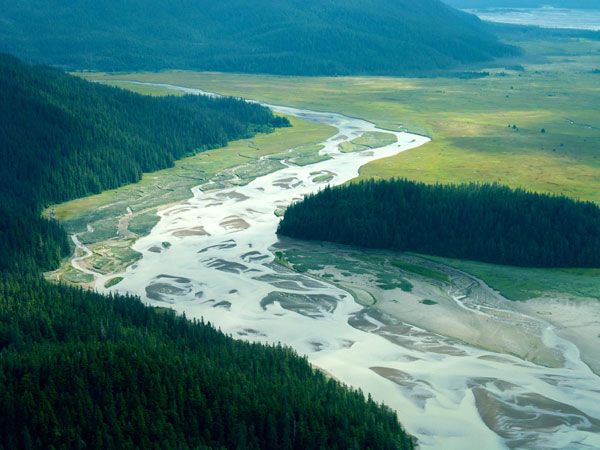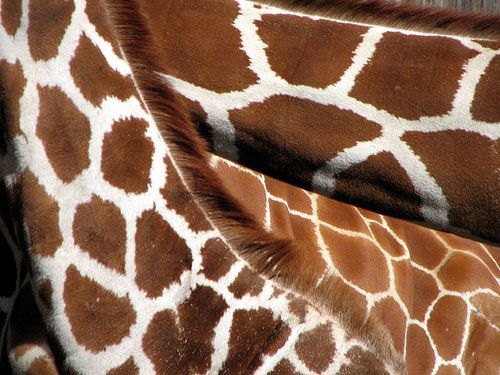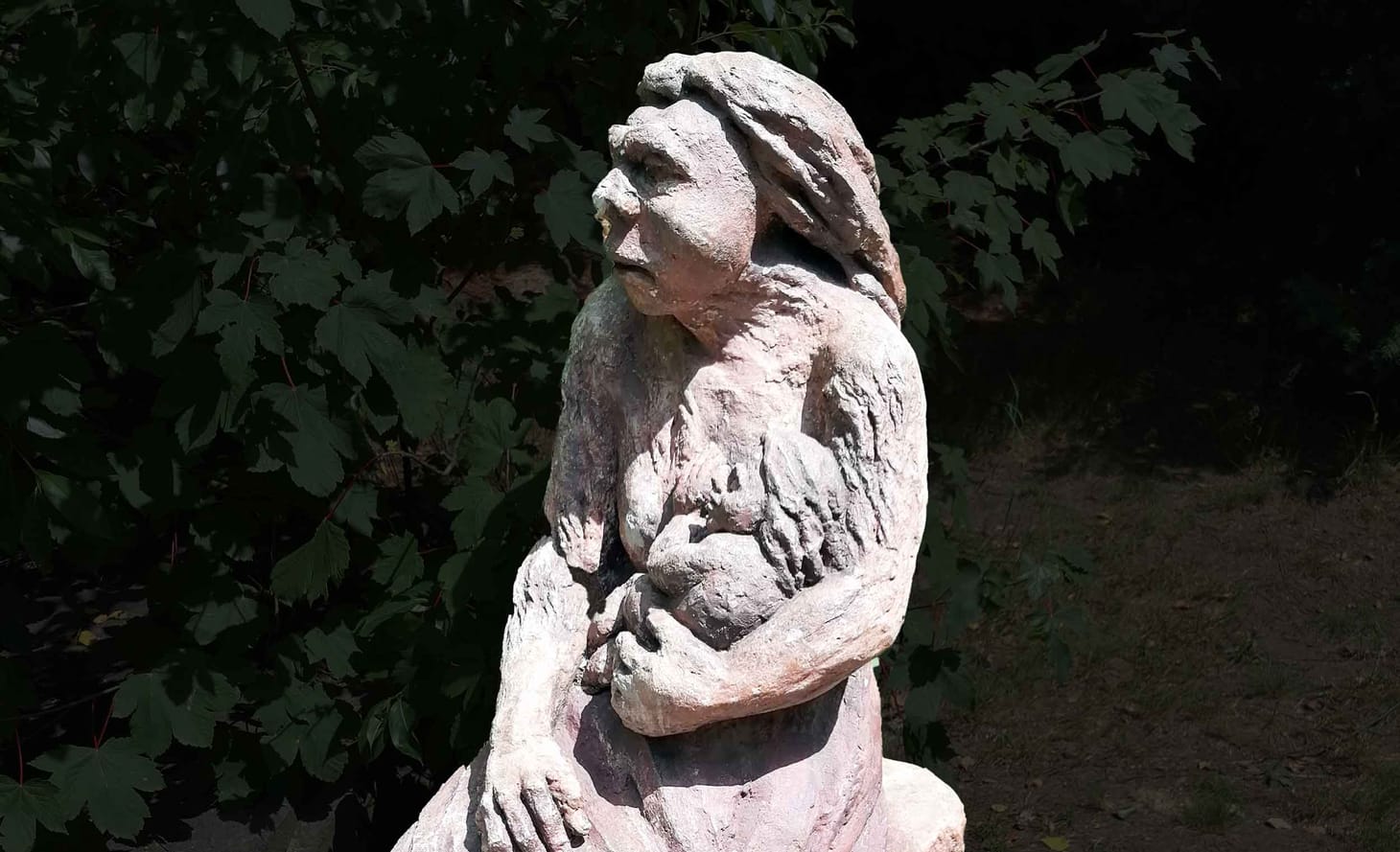What is the ‘braided stream’ analogy for human evolution?
A discussion of the way that reticulation has manifested across human evolution, with reference to an essay by Clive Finlayson.

Two years ago, I pointed to a year-end retrospective that Clive Finlayson had done for BBC News: “Viewpoint: Human evolution, from tree to braid”. He reflected on the meaning of 2013’s significant paleoanthropological discoveries, from the new Dmanisi Homo erectus skull to the Sima de los Huesos and Denisova ancient DNA discoveries.
I was thinking about this old post again today because the topic of the “braided stream” analogy keeps coming up, and Finlayson’s piece was one of the clearest expressions of the idea.
The overall theme of the piece was a key realization of the last few years of paleoanthropology: the importance of gene flow between ancient populations that were morphologically much more diverse than today’s people. Finlayson emphasized the implications: that the more we discover, the more mixing seems to have been an important part of our evolution:
Did we really think that having just a minuscule residue of our long and diverse past was enough for us to tell humanity's story?
If the fossils of 1.8 or so million years ago and those of the more recent Neanderthal-modern human era were all part of a single, morphologically diverse, species with a wide geographical range, what is there to suggest that it would have been any different in the intervening periods?
The whole article provides a great account of how mixing matters to the way we understand human evolution.
When I wrote about this in 2006, I noted that the development of genetic markers to examine variation in other species had begun to turn up widespread evidence of mixture between divergent populations. At that time, some of the most important action was in studying the process of domestication. As humans domesticated plant and animal species, they brought lineages into contact that had been partially or completely isolated in their natural geographic ranges. That mixture had huge effects on the resulting domesticated species, and subsequent introgression from the spreading domesticated populations likewise had huge effects on the genetics of remaining wild populations. It seemed clear that this would also be true of populations of ancient humans, who occupied large geographic ranges and were more closely related than subspecies of many primate species. But the evidence was not yet there.
Of course, that evidence began to emerge in 2010, showing that most living humans carry at least a small fraction of Neandertal genes. Later that year, the Denisovan genome confirmed that some living human populations have genetic ancestry in multiple archaic human populations not yet discovered from archaeological or fossil evidence. But this year, the reality of population mixing really blossomed, as ancient genomes themselves were incorporated into a yet deeper network of separating and remixing.

The “braided stream” analogy captures different information about human origins than the usual branching tree. The branches of a tree do not reconnect with each other above the point where they initially separate. A tree will never admit to exchanging sap between its branches, and there are no little xylem hyphae between branches to carry sap anyway. Our evolution was truly a network in which multiple populations existed and contributed to our process of adaptation.
I admit that the braided stream is not a perfect analogy. Diverging rivulets within a valley almost always come together again, forming a complicated network as they form sandbars and islets. None of them flow into a cul-de-sac. Some human populations of the past did become extinct, they did not inexorably flow back into the mainstream of our evolutionary history. Some of them may have flowed back into the mainstream only through very small channels of genetic exchange. When we go far enough back, some populations really did branch off into their own direction. It’s just not clear yet which populations those were. Maybe an evolutionary swamp would be a better analogy, full of algae-covered bayous.
One of my long-time correspondents notes that there’s a name for this concept: reticulation.

The word comes from the Latin, for “little net”, and the concept of a network is increasingly central to the way we must consider genetic relationships between living and past people. It will be different networks for different genetic loci, involving different ancient populations stretching far back into the Pleistocene.
I like the braided stream, and it’s clear that its time has come. Ancient DNA has begun to show the process of genetic exchange was not a minor player in our evolution. All human populations today evidence some mixture of ancient populations that existed well before the “origin of modern humans”. Genetic exchanges between different populations were dominant in the formation of some human adaptations.
Meanwhile, some human populations can be understood only as the mixed descendants of other, yet more ancient ones, which archaeologists have not yet found. “Ghost population” is the term that geneticists have coined to talk about these mysterious populations known only from the slight mixture of their genes into more recent groups. Two such ghost populations seem to have contributed to the ancestry of living African populations. Another pre-Columbian ghost population contributed to South American indigenous groups. One Siberian ghost population seems to have contributed both to the ancestors of American Indian and to European peoples, as well as to the ancient Mal’ta individual from the Lake Baikal area.
It’s mixing all the way back.
What will be exciting moving forward is integrating this complex genetic picture with archaeology. In his year-end piece from two years ago Finlayson cited some examples of how our view of Neandertal behavior had become more resolved:
A recent paper, for example, supports the view that Neanderthals at La Chapelle-aux-Saints in France intentionally buried their dead which contrasts with reports of cannibalistic behaviour not far away at El Sidron in northern Spain.
Here we have two very different behavioural patterns within Neanderthals. Similarly, modern humans in south-western Europe painted in cave walls for a limited period but many contemporaries did not. Some Neanderthals did it in a completely different way it seems, by selecting raptor feathers of particular colours. Rather than focus on differences between modern humans and Neanderthals, what the examples show is the range of possibilities open to humans (Neanderthals included) in different circumstances.
The time of Neandertals is truly redawning. They are the first ancient population that we have begun to use our full range of genetic tools to understand. We have so many points of comparison between them, stretched across Central and Western Eurasia, and historical human populations. They faced a history of climate change and population contact unmatched in duration among our recent population history. They innovated with their behaviors sometimes in parallel with African populations of the Middle Stone Age, sometimes quite differently. Matching their ecological and archaeological circumstances with genetics will tell us how much of the human evolutionary record we are still missing for other groups.
Neandertals are now the first case of examining human evolution in the deep time dimension. It is the Neandertals who have given us both morphological and genetic evidence across a series of consecutive time slices. In many ways, they are the model organism by which we will come to understand the origins of people throughout the world.
John Hawks Newsletter
Join the newsletter to receive the latest updates in your inbox.



